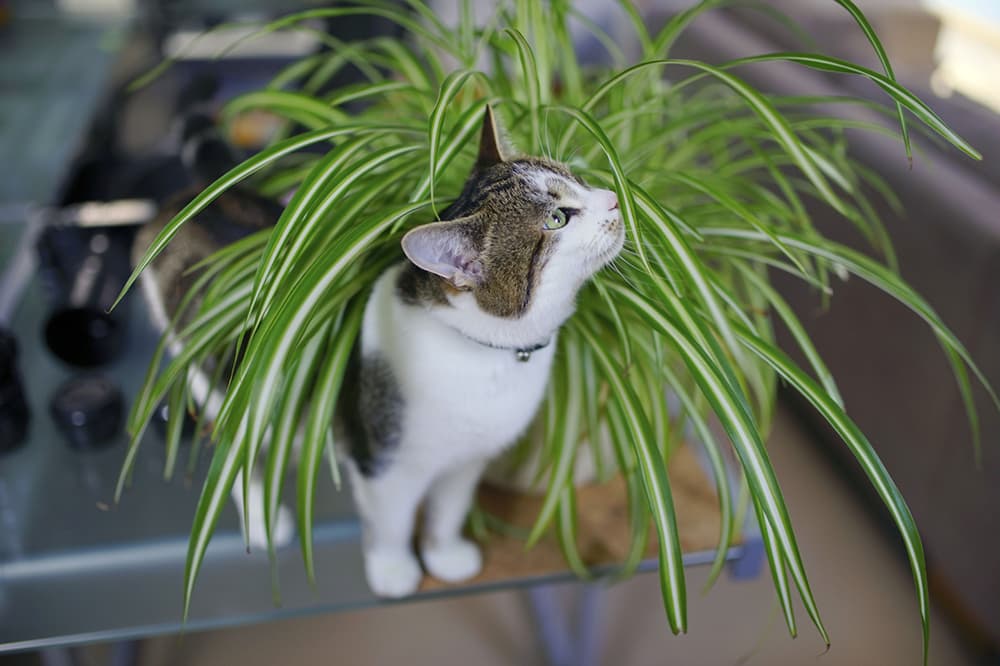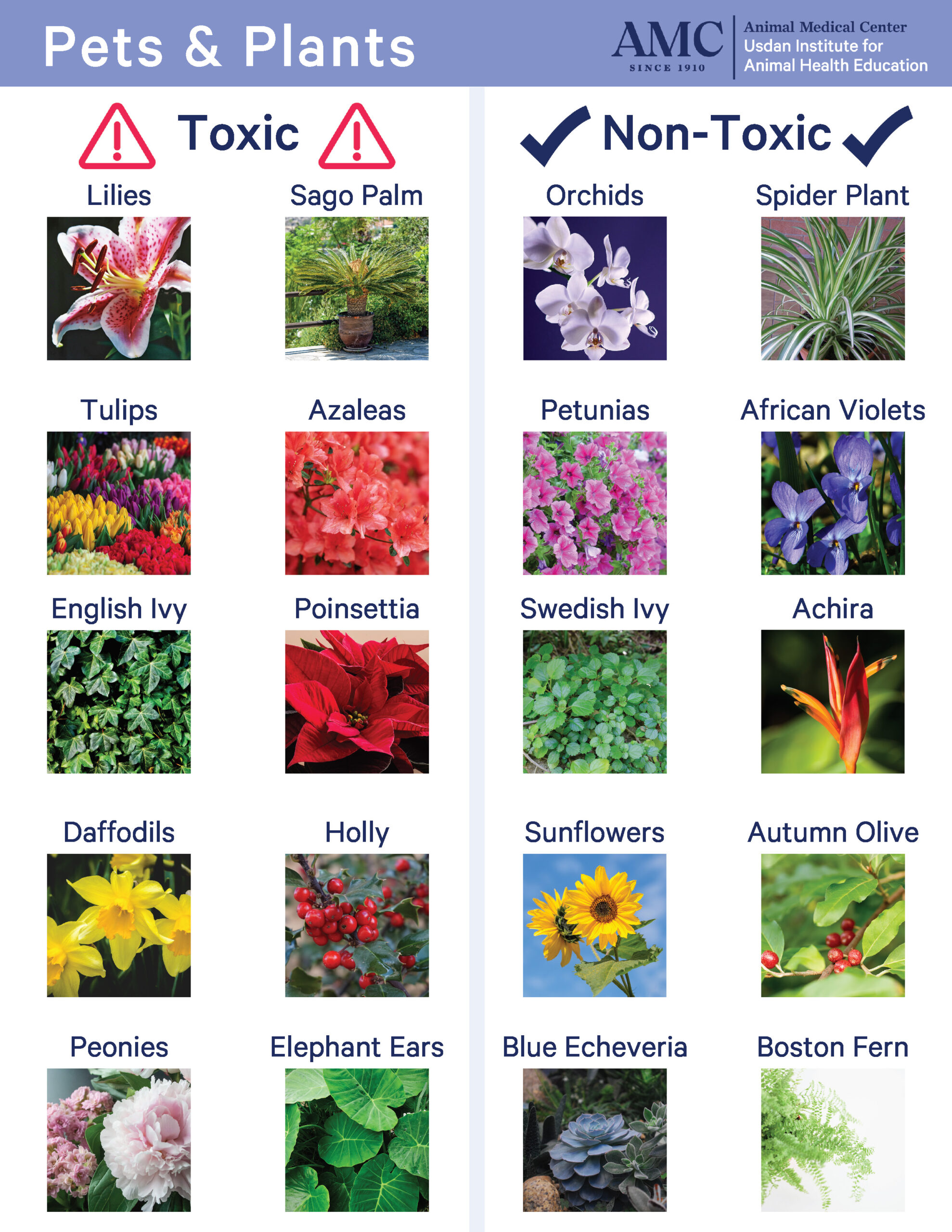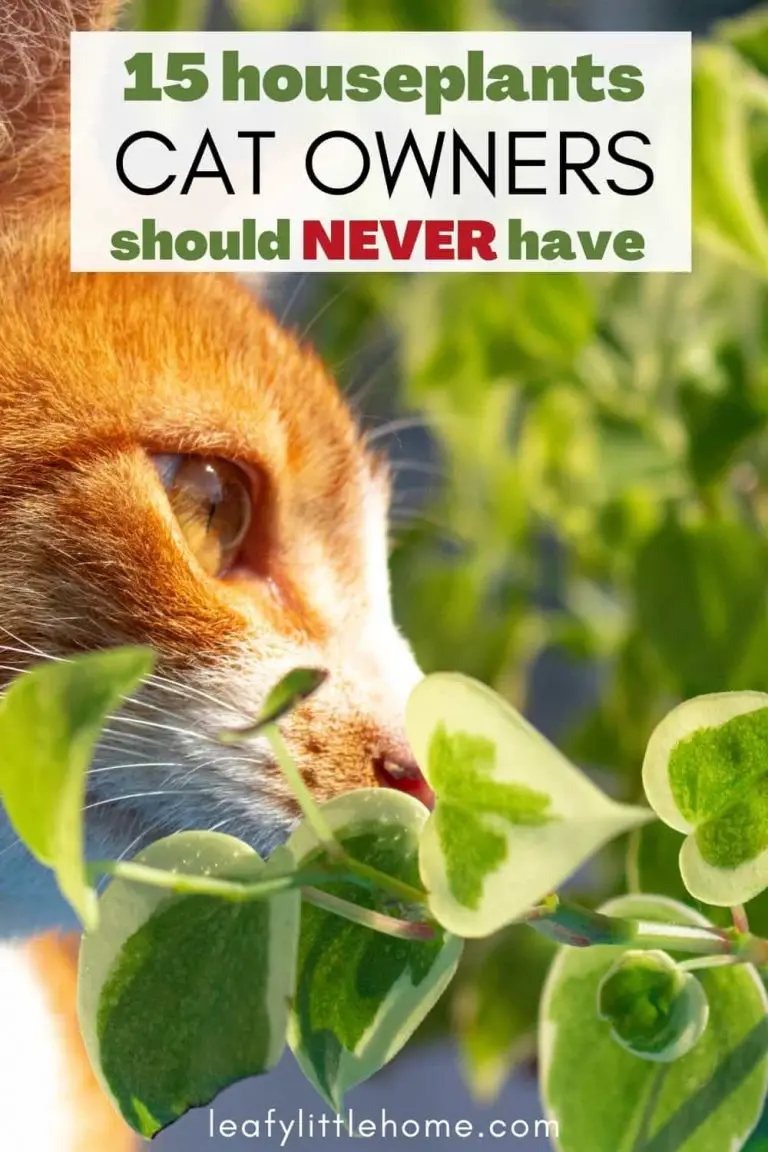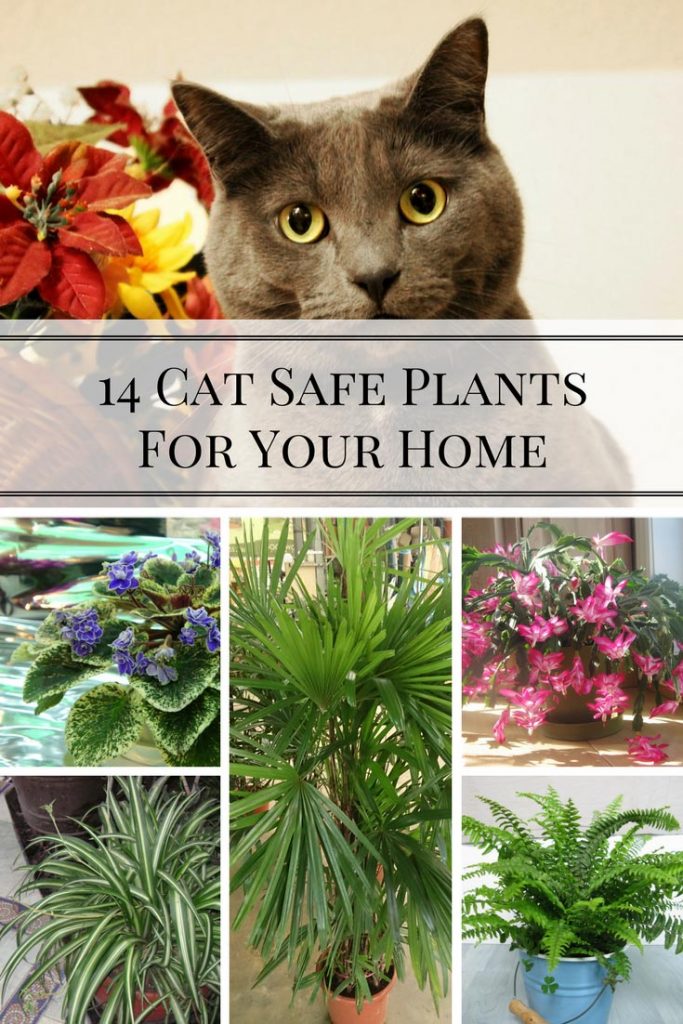How to Identify and Remove Hazardous Plants from Your Home
As a responsible cat owner, it’s essential to be aware of the potential dangers that lurk in your home. Poisonous indoor plants to cats can be a significant threat to your pet’s health and well-being. Many common houseplants, often chosen for their beauty and air-purifying qualities, can be toxic to cats if ingested. In fact, according to the American Society for the Prevention of Cruelty to Animals (ASPCA), plants are one of the top 10 most common toxins that pets are exposed to.
Some of the most toxic houseplants to cats include lilies, snake plants, and philodendron. These plants contain toxic compounds that can cause a range of symptoms, from mild to severe, if ingested by your cat. For example, lily plants contain a toxin called lycorine, which can cause vomiting, diarrhea, and lethargy in cats. Snake plants, on the other hand, contain a toxin called calcium oxalate, which can cause oral and gastrointestinal irritation.
It’s crucial to identify and remove these hazardous plants from your home to ensure your cat’s safety. Start by inspecting your home for any plants that may be toxic to your cat. Check the plant’s leaves, stems, and flowers for any signs of toxicity, such as white or yellow sap. If you’re unsure about the identity of a plant or its toxicity, consult with a veterinarian or a plant expert.
Once you’ve identified the toxic plants in your home, remove them immediately. If you’re attached to a particular plant, consider replacing it with a non-toxic alternative. There are many beautiful and safe houseplants that can add a touch of greenery to your home without putting your cat at risk.
By taking these simple steps, you can help protect your cat from the dangers of poisonous indoor plants. Remember, it’s always better to err on the side of caution when it comes to your pet’s health and well-being. Stay informed, stay vigilant, and keep your cat safe from harm.
The Top Toxic Houseplants That Can Harm Your Cat
When it comes to poisonous indoor plants to cats, some species are more toxic than others. Here are some of the most common hazardous houseplants that can harm your feline friend:
Lily (Lilium spp.): These beautiful flowers are highly toxic to cats, and even small amounts can cause severe kidney damage. All parts of the plant, including the flowers, leaves, and pollen, contain a toxin called lycorine that can cause vomiting, diarrhea, and lethargy in cats.
Snake Plant (Sansevieria Trifasciata): Also known as Mother-in-Law’s Tongue, this plant contains a toxin called calcium oxalate that can cause oral and gastrointestinal irritation in cats. If ingested, it can lead to symptoms such as drooling, vomiting, and difficulty swallowing.
Philodendron (Philodendron spp.): Philodendron plants contain a toxin called calcium oxalate, which can cause oral and gastrointestinal irritation in cats. If ingested, it can lead to symptoms such as vomiting, diarrhea, and lethargy.
Other toxic houseplants to cats include:
- Tulip (Tulipa spp.)
- Daffodil (Narcissus spp.)
- Azalea (Rhododendron spp.)
- Oleander (Nerium oleander)
It’s essential to remember that even if a plant is not toxic, eating plant material can still cause gastrointestinal upset in cats. If you suspect your cat has ingested any plant, it’s always best to err on the side of caution and consult with your veterinarian.
Understanding the Risks: How Cats Can Be Exposed to Toxic Plants
Cats can be exposed to toxic plants in various ways, including ingestion, skin contact, and inhalation. Understanding these risks is crucial to preventing plant poisoning in cats.
Ingestion: Cats are naturally curious creatures, and they often explore their surroundings by mouthing and ingesting objects, including plants. If a cat ingests a toxic plant, the toxins can be absorbed into the bloodstream, causing a range of symptoms.
Skin Contact: Some plants can cause skin irritation or allergic reactions in cats, even if they don’t ingest them. For example, the sap of the philodendron plant can cause skin irritation and blistering in cats.
Inhalation: While less common, cats can also be exposed to toxic plants through inhalation. For example, the pollen of certain plants, such as lilies, can be toxic to cats if inhaled.
The symptoms of plant poisoning in cats can vary depending on the type of plant and the amount ingested. Common symptoms include:
- Vomiting
- Diarrhea
- Lethargy
- Loss of appetite
- Increased salivation
- Difficulty breathing
If you suspect your cat has ingested a toxic plant, it’s essential to seek veterinary attention immediately. Prompt treatment can help prevent serious complications and reduce the risk of long-term damage.
Remember, prevention is key. By being aware of the risks associated with poisonous indoor plants to cats and taking steps to prevent exposure, you can help keep your feline friend safe and healthy.
Safe Alternatives: Non-Toxic Houseplants for Cat Owners
If you’re a cat owner, you don’t have to sacrifice your love of houseplants to keep your pet safe. There are many non-toxic houseplants that are safe for cats and can add beauty and freshness to your home.
Spider Plant (Chlorophytum comosum): This easy-to-care-for plant is a great option for cat owners. It’s non-toxic to cats and can be grown in a variety of lighting conditions.
Parlor Palm (Chamaedorea elegans): With its elegant, slender leaves, the parlor palm is a popular choice for indoor spaces. It’s also safe for cats and can thrive in low-light conditions.
Peperomia (Peperomia obtusifolia): This small, compact plant is perfect for small spaces and is non-toxic to cats. It prefers high humidity and low light, making it a great option for bathrooms or offices.
Other non-toxic houseplants for cat owners include:
- Prayer Plant (Maranta leuconeura)
- Polka Dot Plant (Hypoestes phyllostachya)
- Calathea (Calathea spp.)
When choosing non-toxic houseplants, make sure to select plants that are healthy and free of pests. Also, keep in mind that even non-toxic plants can cause gastrointestinal upset if ingested, so it’s still important to keep an eye on your cat’s behavior around plants.
To care for your non-toxic houseplants, follow these general tips:
- Water plants thoroughly, allowing soil to dry slightly between waterings
- Provide plants with bright, indirect light
- Fertilize plants regularly, using a balanced fertilizer
- Prune plants regularly to maintain shape and promote healthy growth
By choosing non-toxic houseplants and following proper care and maintenance, you can create a beautiful and safe indoor space for both you and your cat to enjoy.
Prevention is Key: Tips for Keeping Your Cat Safe from Toxic Plants
Preventing cat exposure to toxic plants is crucial to keeping your feline friend safe and healthy. Here are some tips to help you prevent cat exposure to poisonous indoor plants to cats:
Keep Plants Out of Reach: Cats are naturally curious, and they often explore their surroundings by climbing and jumping. To prevent your cat from accessing toxic plants, keep them out of reach by placing them on high shelves or hanging baskets.
Use Plant Covers: Plant covers can help prevent your cat from accessing toxic plants. You can purchase plant covers at most gardening stores or online.
Trim Plant Leaves: Trimming plant leaves can help prevent your cat from ingesting toxic plant material. Use scissors or pruning shears to trim leaves and stems.
Monitor Your Cat’s Behavior: Monitoring your cat’s behavior around plants is crucial to preventing exposure. If you notice your cat showing interest in a plant, remove the plant immediately.
Choose Safe Plants: Choosing safe plants is the best way to prevent cat exposure to toxic plants. Opt for non-toxic plants like spider plants, parlor palms, and peperomia.
By following these tips, you can help prevent your cat from being exposed to toxic plants and keep them safe and healthy.
Remember, it’s always better to err on the side of caution when it comes to your cat’s safety and well-being. If you’re unsure about the toxicity of a plant, it’s best to avoid it altogether.
What to Do If Your Cat Ingests a Toxic Plant
If your cat ingests a toxic plant, it’s essential to act quickly to minimize the risk of poisoning. Here’s a step-by-step guide on what to do if your cat ingests a poisonous indoor plant:
Step 1: Contact Your Veterinarian or a Pet Poison Hotline
If you suspect your cat has ingested a toxic plant, contact your veterinarian or a pet poison hotline immediately. The ASPCA’s Animal Poison Control Center (APCC) is a 24/7 hotline that can provide you with expert advice and guidance.
Step 2: Induce Vomiting (If Advised)
If your veterinarian or the pet poison hotline advises you to induce vomiting, do so immediately. However, never induce vomiting without consulting a veterinarian or pet poison hotline first, as this can sometimes make the situation worse.
Step 3: Administer Activated Charcoal
Activated charcoal can help absorb the toxins from the plant and reduce the risk of poisoning. However, only administer activated charcoal if advised to do so by a veterinarian or pet poison hotline.
Step 4: Monitor Your Cat’s Symptoms
Keep a close eye on your cat’s symptoms and monitor their behavior. If your cat is showing signs of poisoning, such as vomiting, diarrhea, or lethargy, seek veterinary attention immediately.
Remember, prompt action is crucial when it comes to treating plant poisoning in cats. If you’re unsure about what to do or if your cat is showing signs of poisoning, always err on the side of caution and seek veterinary attention.
Creating a Cat-Friendly Home: Plant Placement and Safety
When it comes to creating a cat-friendly home, plant placement and safety are crucial considerations. By choosing the right plants and placing them in safe locations, you can help prevent your cat from being exposed to poisonous indoor plants.
Keep Toxic Plants Out of Reach: If you have toxic plants in your home, make sure to keep them out of reach of your cat. Place them on high shelves or hanging baskets where your cat can’t access them.
Use Plant Stands: Plant stands can help keep plants off the floor and out of reach of your cat. Look for plant stands that are sturdy and won’t tip over easily.
Choose Safe Plants: Instead of choosing toxic plants, opt for safe and non-toxic plants that are safe for your cat. Some examples of safe plants include spider plants, parlor palms, and peperomia.
Monitor Your Cat’s Behavior: Keep an eye on your cat’s behavior around plants. If you notice your cat showing interest in a plant, remove the plant immediately.
By following these tips, you can create a cat-friendly home that is safe and welcoming for your feline friend. Remember, it’s always better to err on the side of caution when it comes to your cat’s safety and well-being.
By choosing safe plants and placing them in safe locations, you can help prevent your cat from being exposed to poisonous indoor plants. This will give you peace of mind and help ensure your cat’s safety and well-being.
Conclusion: Prioritizing Your Cat’s Safety and Well-being
As a responsible cat owner, it’s essential to prioritize your pet’s safety and well-being. Being aware of toxic houseplants and taking steps to prevent cat exposure is crucial to protecting your feline friend from harm.
By understanding the risks associated with poisonous indoor plants to cats and taking proactive measures to prevent exposure, you can help ensure your cat’s safety and well-being. Remember, it’s always better to err on the side of caution when it comes to your cat’s health.
By choosing safe plants, keeping toxic plants out of reach, and monitoring your cat’s behavior around plants, you can create a cat-friendly home that is safe and welcoming for your pet.
In conclusion, being aware of toxic houseplants and taking steps to prevent cat exposure is essential to protecting your cat’s safety and well-being. By prioritizing your cat’s health and taking proactive measures to prevent exposure, you can help ensure a happy and healthy life for your feline friend.







